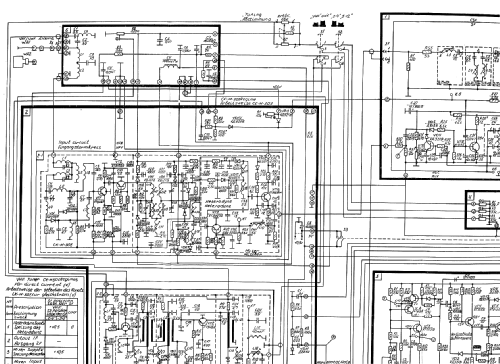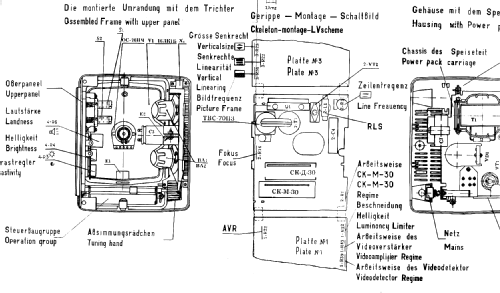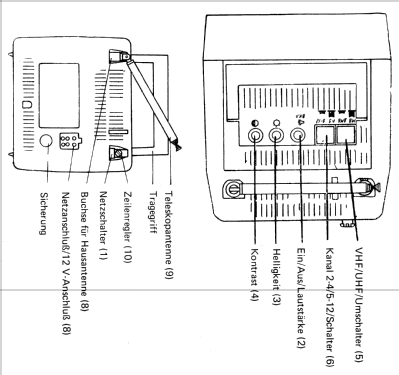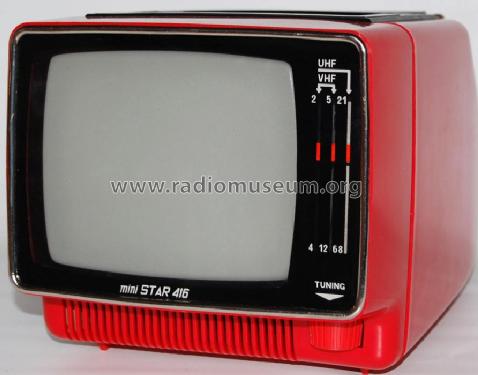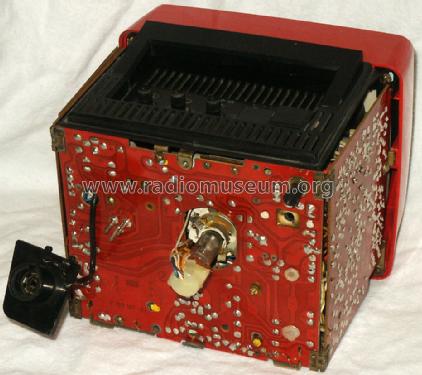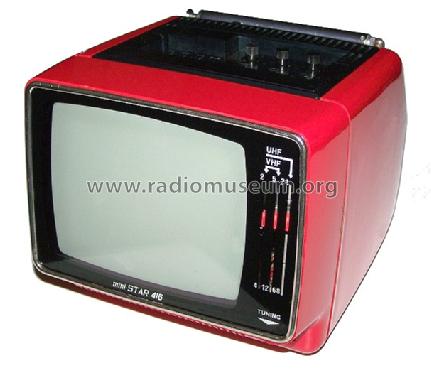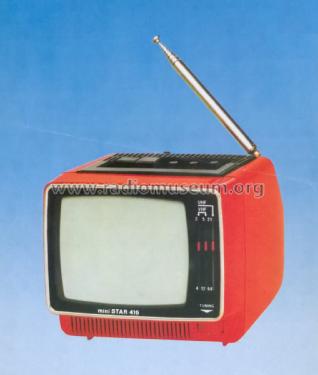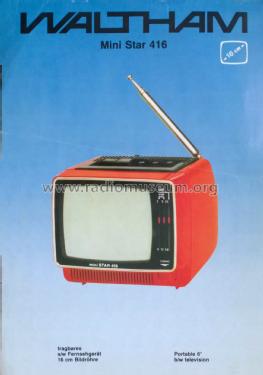Mini-Star 416
Waltham S.A., Genf
- Country
- Switzerland
- Manufacturer / Brand
- Waltham S.A., Genf
- Year
- 1984
- Category
- Television Receiver (TV) or Monitor
- Radiomuseum.org ID
- 111884
-
- Brand: Waltham
Click on the schematic thumbnail to request the schematic as a free document.
- Number of Tubes
- 1
- Valves / Tubes
- 16ЛК1Б
- Number of Transistors
- Semiconductors present.
- Semiconductors
- Main principle
- Superheterodyne (common)
- Wave bands
- Wave Bands given in the notes.
- Power type and voltage
- Line / Batteries (any type) / 220 / 12 Volt
- Loudspeaker
- 2 Loudspeakers / Ø 6 cm = 2.4 inch
- Material
- Plastics (no bakelite or catalin)
- from Radiomuseum.org
- Model: Mini-Star 416 - Waltham S.A., Genf
- Shape
- Portable set > 8 inch (also usable without mains)
- Dimensions (WHD)
- 180 x 160 x 205 mm / 7.1 x 6.3 x 8.1 inch
- Notes
- 16 cm B/W TV with CCIR VHF/UHF tuner, built-in telescopic antenna, made in USSR.
- Net weight (2.2 lb = 1 kg)
- 3 kg / 6 lb 9.7 oz (6.608 lb)
- Price in first year of sale
- 159.00 DM
- Mentioned in
- -- Original prospect or advert
- Literature/Schematics (1)
- -- Schematic
- Author
- Model page created by a member from A. See "Data change" for further contributors.
- Other Models
-
Here you find 44 models, 42 with images and 13 with schematics for wireless sets etc. In French: TSF for Télégraphie sans fil.
All listed radios etc. from Waltham S.A., Genf
Collections
The model Mini-Star is part of the collections of the following members.
Museums
The model Mini-Star can be seen in the following museums.
Forum contributions about this model: Waltham S.A., Genf: Mini-Star 416
Threads: 1 | Posts: 1
Ich erhielt eine Anfrage, ob ich das Netzkabel für diese FS-Gerät habe und verkaufen würde. Da meine beiden Geräte spielen und ihre Kabel benötigen, habe ich nach Ersatz gesucht und die Anschlüsse ausgemessen.
Das Gerät hat 6 Anschlussstifte.
Die beiden oberen Stifte benötigen die Netzspannung (220 - 230V),
die beiden Mittleren müssen gebrückt werden, denn darüber wird die 12V Gleichspannung geleitet.
Ich habe nun mein Gerät mit sicherem Ersatzkabel angeschlossen.
Ein übliches Netzkabel, das für viele Transistorradios mit Netzanschluss und bei anderen Geräten benutzt wird, habe ich auf die oberen Pinne gesteckt. Es passt genau und sitzt fest.
Von einem weiteren Kabel habe ich den Stecker abgekniffen und die beiden Drahtenden verlötet und isoliert.
Den Stecker habe ich auf die mittleren Pinne gesteckt.
So spielt das Gerät
(Die unteren Pinne sind für 12V DC vorgesehen und werden am Netz nicht benötigt). Dort kann ich ca 17V= messen.

Heribert Jung, 06.May.12


